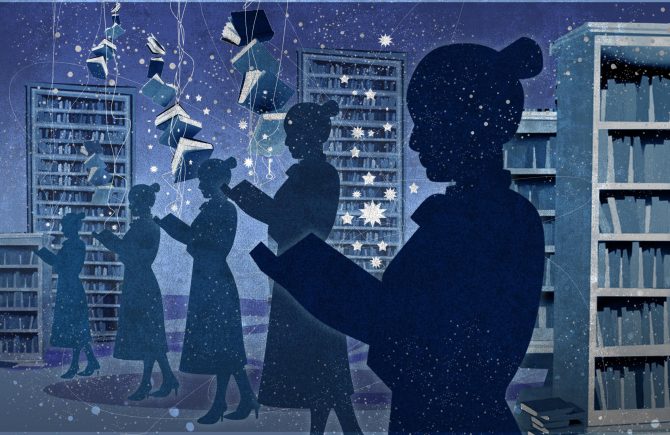‘Between life and death there is a library,’ she said. ‘And within that library, the shelves go on for ever. Every book provides a chance to try another life you could have lived. To see how things would be different if you had made other choices. . .Would you have done anything different, if you had the chance to undo your regrets?’
Within the opening pages of The Midnight Library, we meet Nora Seed, a young woman in her early thirties who is feeling despaired about her world. Estranged from her family, friends, and feeling incredibly alone, she decides there is no other choice left than to take her own life. Following this event, Nora resurfaces in a world described as such by its caretaker, Mrs. Elm, ‘For want of a better word, it is in-between. It is not life. It is not death. It is not the real world in a conventional sense. But nor is it a dream. It isn’t one thing or another. It is, in short, the Midnight Library.’
In-between states are not unfamiliar territory for literature or film, however, one could say that it is also not uncommon for our everyday lives either. A recent exploration of such in-between-ness was the premise of 2017’s Lincoln in the Bardo by George Saunders. Here the bardo, or in-between state, referenced is a concept found in Tibetan Buddhism and succinctly explained in Mingyur Rinpoche’s book, In Love with the World: A Monk's Journey Through the Bardos of Living and Dying:
‘Bardo can be understood to mean “this very moment.” The nowness of this moment is the continual suspension (or pause) in-between our transitory experiences, both temporal and spatial, such as the tiny halt that exists between this breath and the next; or the arising and fading of this thought and the next. The interval can also be experienced as the in-between of two objects: the gap between two trees or two cars--the space that provides definition. Actually, everything is in-between. However minuscule the interval might be, it always exists.’
In layman’s terms, these gaps can range in length and involve all manner of conditions, from decisions as banal as what to eat for dinner to much larger ones, such as living through a global pandemic or awaiting the outcome of a presidential election. However, it seems important to remember that these gaps are constantly occurring and always contain a level of uncertainty. Sounding familiar?
Within the in-between state known as the Midnight Library, there exists an opportunity that most only dream of. The books shelved here contain the multitude of outcomes that Nora Seed’s life could have taken based on certain decisions made. As each book opens, she drops into an alternate timeline, à la Sam Beckett from Quantum Leap, without any prior knowledge or reference point and it is here the metamorphosis of Nora Seed begins.
The journey of self realization found here is one that could only come from the heart of a person who has lived it. While a work of fiction, author Matt Haig also experienced his own life changing transformation with mental health. An area he dedicates speaking to in his book Reasons to Stay Alive, an excellent accompaniment to The Midnight Library. Reading this will give insight to the struggle that Nora Seed experiences and a better understanding of those affected by mental illness. Nonetheless, I am confident that you, the reader, will see yourself within Midnight Library’s pages. It is a heartwarming, rejuvenating tale that weaves together philosophical wisdom, a love of libraries, and, believe it or not, quantum theory in a most beautiful way. A book that feels needed during this in-between state we find ourselves in and one that may inspire you to begin a transformative journey of your own.
-Ilka Iwanczuk is a Readers' Services Assistant at Lawrence Public Library.





Add a comment to: Endless Possibilities Inside The Midnight Library